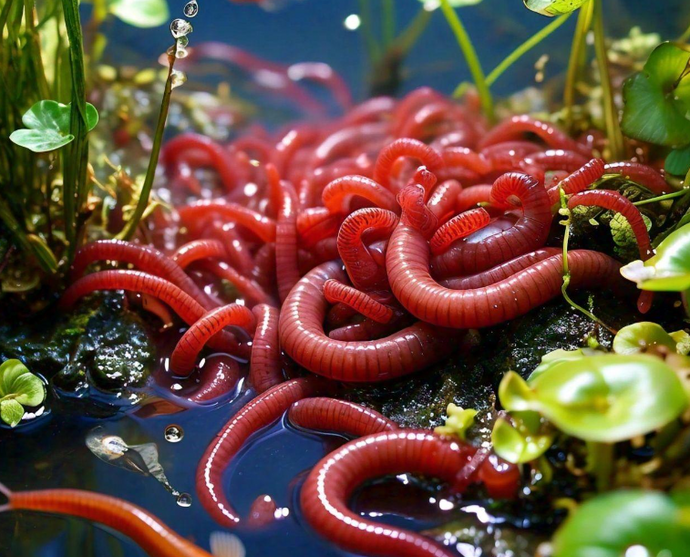Live red wigglers: How to begin composting
Live red wigglers: How to begin composting
Blog Article
Red Wigglers: Your Eco-Friendly Remedy for a Greener Garden
Red wigglers, or Eisenia fetida, present a lasting approach to boosting garden wellness through vermicomposting. These worms not just help with the failure of organic waste yet likewise add to improved dirt structure and fertility. By incorporating red wigglers right into your gardening techniques, you can efficiently take care of waste while nurturing a lively ecosystem (red worms). The benefits expand past mere composting; comprehending the subtleties of their care and optimal usage can dramatically elevate your gardening efforts. What crucial practices can ensure your vermicomposting system prospers while optimizing its impact on your garden's vitality?
(eisenia fetida worms for sale)
What Are Red Wigglers?
Although usually incorrect for regular earthworms, red wigglers (Eisenia fetida) are a distinctive types known for their performance in composting organic matter. These worms prosper in rich, natural atmospheres, such as compost heap and vermicomposting systems, where they play an essential duty in breaking down waste. Unlike their even more typical counterparts, red wigglers like a warmer habitat, commonly between 55 ° F and 77 ° F, which optimizes their activity and performance.
Red wigglers are defined by their reddish-brown coloration and fractional bodies, which can mature to four inches in size. They possess a special capacity to eat and digest organic products at an outstanding price, processing approximately half their body weight daily. This rapid decay procedure not only enhances the soil however additionally contributes to the general wellness of the garden ecological community.
In terms of reproduction, red wigglers are respected, with the ability of creating cocoons that have multiple eggs. This enables for fast population growth, making them an excellent selection for composting endeavors. Their versatility and voracious cravings for natural waste setting red wigglers as a necessary ally for ecologically conscious gardeners seeking lasting methods.
Advantages of Using Red Wigglers
Utilizing red wigglers in the yard provides numerous benefits that boost both dirt quality and plant health and wellness. These earthworms are exceptional decomposers, breaking down natural matter such as cooking area scraps and lawn waste into nutrient-rich spreadings. These spreadings, typically described as "worm gold," offer vital nutrients that enhance soil fertility, promoting vibrant plant growth.
Red wigglers likewise improve dirt structure. The existence of red wigglers enhances microbial activity in the soil, producing a flourishing ecological community that contributes to condition resistance and enhanced plant health and wellness.
One more significant benefit of making use of red wigglers is their capability to lower waste. In summary, incorporating red wigglers into horticulture techniques returns substantial benefits, making them a useful addition to any type of eco-conscious yard.
(eisenia fetida worms for sale)
How to Start Vermicomposting
To start vermicomposting, it's vital to produce a suitable atmosphere for red wigglers to prosper, as their success directly impacts the performance of the composting procedure. Beginning by choosing a container, such as a plastic or wood bin, with ample water drainage and air flow. A dimension of about 2 square feet is ideal for a household, enabling a workable worm populace.
Following, prepare bed linens material that is damp but not extremely wet. Shredded paper, cardboard, and coconut coir are outstanding selections, supplying a comfortable environment while also working as a carbon resource. Fill up the bin with 4 to 6 inches of bed linens.
After establishing the bed linen, present your red wigglers. A typical starting population is about 1 extra pound of worms, which can take in around half an extra pound of food scraps daily. It is vital to add food scraps progressively, concentrating on veggie peelings, fruit waste, and coffee grounds, while staying clear of meat, dairy products, and oily foods to stop odors.
Preserving a Healthy Worm Container
As soon as your red wigglers are resolved right into their new bed linens, preserving a healthy and balanced worm bin ends up being critical to make sure optimal composting problems. The primary aspects to check consist of dampness, temperature, and oygenation. Ideally, the worm container must be kept moist but not soaked; a moisture level around 60-70% is optimum. To attain this, consistently check the bedding and include water as needed, while also making use of completely dry products such as shredded paper to soak up excess dampness.
Temperature level control is equally essential. Red wigglers flourish in settings between 55 ° F and 77 ° F(13 ° C to 25 ° C) Stay clear of subjecting the bin to severe temperature levels; severe heat can eliminate the worms, while extreme cold can slow their task.
Oygenation is crucial to prevent anaerobic problems, which can cause undesirable odors and harm the worms. Transform the bed linen gently every few weeks to promote airflow and disperse food uniformly.
Feeding your red wigglers is another critical element. Offer a well balanced diet of kitchen area scraps, staying clear of citrus and spicy foods, which can be harmful to their wellness. By routinely monitoring these factors, you can guarantee a thriving ecosystem within your worm bin.

Tips for Making Use Of Worm Castings
Frequently integrating worm castings into your garden can considerably enhance dirt health and plant growth. To properly utilize worm castings, start by figuring out the ideal application rate, which typically varies from 10-20% of the overall soil volume. This makes certain ideal nutrient availability without frustrating your plants.
When using worm spreadings, mix them into the leading few inches of soil around established plants or incorporate them right into your seed-starting mix for new seedlings. Furthermore, consider producing a worm tea by steeping worm castings in water for 24-48 hours.

Final Thought
The use of red wigglers in horticulture practices offers a lasting approach to throw away monitoring and soil enrichment. The assimilation of red wigglers into gardening regimens ultimately supports both eco-friendly balance and farming performance. red worms.
Report this page